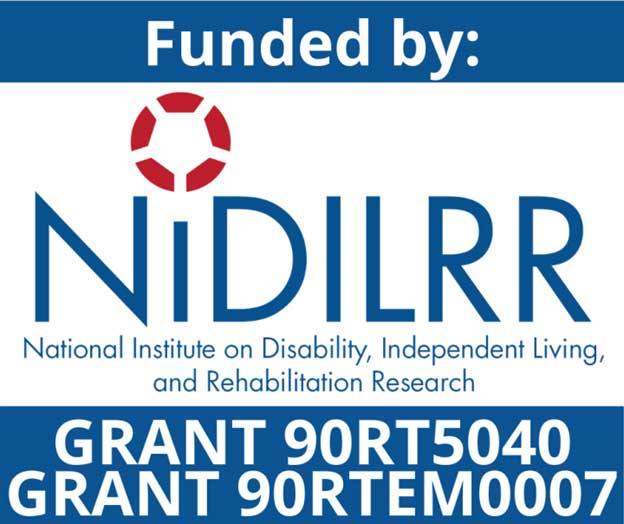Voice Over Internet Protocol (VoIP) phones are found in many offices but are often inaccessible to individuals with blindness or who have low vision (BLV). If you’re in need of an accessible VoIP system for your office, and want to make sure that it’s fully accessible, here are the top 10 features to keep in mind.
Top 10 Features
Discernable Physical Keys
Keys on VoIP phones that are uniform in shape and texture and are placed close together can be difficult to use for individuals with BLV. A VoIP phone that has well-spaced, prominent keys that are different shapes and textures can make the interface of a physical VoIP phone accessible. Keys with unique textures or shapes provide a point of orientation and make memorizing key locations easier when navigating a phone by touch.
Accessible Caller ID
Like most physical phones, VoIP phones usually display caller ID on a digital display that is difficult for someone with BLV to use. A VoIP phone that can connect to an external talking caller ID or has some other way of non-visually communicating caller ID can be used successfully by someone with BLV.
Accessible Voicemail Indicator
VoIP phones have visual indicators to alert users to new voicemail. Look for systems that present this information in an accessible manner. For example, sending an email to the user upon receipt of a voicemail is an accessible alternative for people with BLV.
Accessible Call Log
The call log of a physical VoIP phone is available on the digital display without an accessible alternative. Currently, an accessible call log can be acquired by connecting a software based VoIP phone (softphone) to the same line as the physical phone so that it can be accessed by a person with BLV using computer access software.
Accessible Address Book
Like the call log, the address book is presented visually on the digital display of a physical VoIP phone. The most accessible way to use the address book is to use a softphone that can make calls on the same line as the physical phone so that the user can use the address book using screen access software on the softphone.
Accessible Softkeys
A softkey is a physical button that changes function depending on circumstances. The current function of a softkey is presented visually on a digital display just above the key so that a user knows what the key will do if pressed. Softkeys that have audible or tactile indications that their status has changed are accessible to people with BLV.
Large Font/High Contrast Display
In many cases VoIP displays are not backlit and have small fonts and low contrast, making the display very difficult to read for someone with low vision. A VoIP phone is more accessible if the display has high contrast between foreground and background. Large font also makes the display easier to read.
Accessible Documentation
Printed documentation that uses a small font is inaccessible to someone with BLV. The most universally accessible style of documentation will be digital formats such as DOCX or HTML. Digital documents can be enlarged by screen magnifiers, read with screen readers, or printed in braille. (NOTE: PDF documents that contain only images of text are not accessible to screen readers or braille displays.)
Accessible Indication Of Status Changes
In order to be accessible, status changes, such as phone muting and display navigation, should have sounds to signal these changes. Such sounds, commonly called earcons, make navigating VoIP systems easier for a person with BLV. For example, a different tone playing for mute and unmute allows a person with BLV to determine the status of their device.
Accessible Alternative For Display Information
The display on a physical phone can be used for many functions, from caller ID to settings. Communicating this information using synthetic speech makes a VoIP system more accessible. Currently, the only method for presenting VoIP functions in a completely accessible manner is to use a softphone, because there are no physical VoIP phones that present their information in an accessible manner from the device itself.
